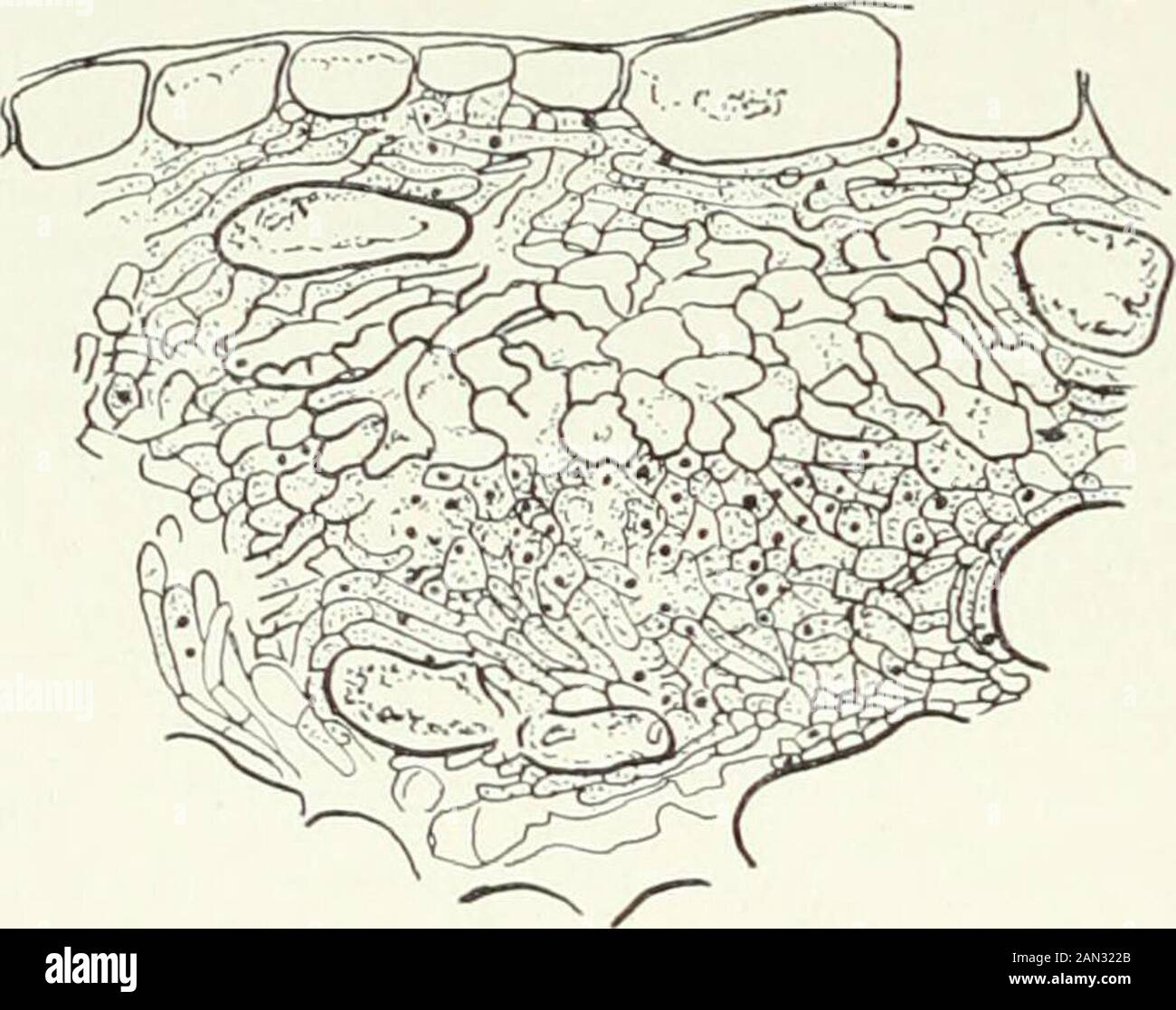Fungi, Ascomycetes, Ustilaginales, Uredinales . eir destination by insects. The aecidia occur in groups, usually on the abaxial side of the leaf; in them the aecidiospores areproduced in basipetal rows(fig. I/O) alternating withsmall, abortive, intercalarycells, by the disintegration ofwhich they are set free. Theymay be carried to consider-able distances by the wind,and there is evidence thatthey are sometimes distri-buted by means of insects orof snails. The mature aecidio-spore is usually subgloboseor polygonal in form, it isenclosed in a thick wall per-forated byseveral germ-pores,and cont

Image details
Contributor:
The Reading Room / Alamy Stock PhotoImage ID:
2AN322BFile size:
7.1 MB (306.8 KB Compressed download)Releases:
Model - no | Property - noDo I need a release?Dimensions:
1778 x 1405 px | 30.1 x 23.8 cm | 11.9 x 9.4 inches | 150dpiMore information:
This image is a public domain image, which means either that copyright has expired in the image or the copyright holder has waived their copyright. Alamy charges you a fee for access to the high resolution copy of the image.
This image could have imperfections as it’s either historical or reportage.
Fungi, Ascomycetes, Ustilaginales, Uredinales . eir destination by insects. The aecidia occur in groups, usually on the abaxial side of the leaf; in them the aecidiospores areproduced in basipetal rows(fig. I/O) alternating withsmall, abortive, intercalarycells, by the disintegration ofwhich they are set free. Theymay be carried to consider-able distances by the wind, and there is evidence thatthey are sometimes distri-buted by means of insects orof snails. The mature aecidio-spore is usually subgloboseor polygonal in form, it isenclosed in a thick wall per-forated byseveral germ-pores, and contains red, yellow ororange pigment, and alwaystwo nuclei. In germinationa hypha is put out whichenters the host plant throughone of the stomata and sopenetrates into the inter-cellular spaces. The development of theaecidium begins by the mass-ing of hyphae either deep inthe tissues of the host (Gym-nosporangium clavariaeforme, Fig. 170. Uromyces Poae Raben.; aecidium just beforethe epidermis is broken through, x 310; after Black-man and Fraser.. Fig Uromyces Poae Raben.; young aecidium, ? 370; after Blackmail and Fraser. Puccinia Poarum (Blackmail and Fraser 06), Puccinia Falcariae (Ditt-schlag 10)), or directly below the epidermis (Phragmiditim violacaim (Black-man 04), Uromyces Poae (Blackman and Fraser 06) (fig. 171), PucciniaClaytoniata (Fromrne 14)); these hyphae give rise to a more or less regularseries of uninucleate cells. These are the fertile cells, but, before developingfurther, each, at any rate in the relatively primitive forms (caeomata), maycut off one or occasionally more terminal sterile cells which ultimatelydegenerate. The fertile cells may unite laterally in pairs (fig. 172), so thatbinucleate compound cells are formed ; they may similarly pair with the VIII] UREDINALES 201